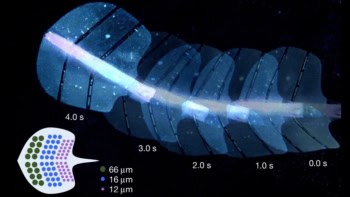
A new electrochemical cell could detect airborne viruses like SARS-CoV-2 in near real-time, according to researchers at the US Department of Energy’s Pacific Northwest National Laboratory (PNNL). The device could be positioned on a wall or ceiling, or in air ducts, to warn occupants when even trace levels of the virus are present, they say.
Today’s systems for identifying infectious individuals include rapid antigen tests, serological tests and tests based on the reverse transcription polymerase chain reaction (PCR). While efficient and effective, these systems are not compatible with airborne sampling, which is widely regarded as an important tool for controlling future pandemics.
One technology that does show promise in this context is imprinted molecular structures. These structures respond to the presence of compounds such as proteins, inorganic particles, viruses, and bacteria in air, triggering changes that can be detected electronically.
The new system developed by Lance Hubbard, Samuel Morrison and colleagues incorporates these imprinted structures within bilayer polymer-coated spherical fatty molecules, or micelles. Each micelle is around 5 microns in diameter, and its outer surface is imprinted with silica particles around 500 nm in size. When SARS-CoV-2 viral particles bind to the imprinted particles, the bilayer bursts open, producing a current that can be measured with conventional electronic equipment in near real-time.
A signal magnifier
“The system acts like a signal magnifier, translating the presence of one viral particle into 10 billion particles that together create a detectable signal,” Morrison explains. “The detector has advantages over today’s technologies: it produces a signal faster; requires a much lower level of viral particles; or produces fewer errors.”
The researchers report that their detector is sensitive to one viral particle in a billion and can detect the virus within a millisecond. However, it does take an additional minute to run quality software to confirm the signal.

Very dry and very humid indoor environments are worse for COVID spread
The researchers, who report their work in MRS Communications, are now looking to expand the scope of their technology to other chemical-biological-explosive threats, such as industrial pollutants, environmental toxins, bacteria in food or even improvised explosive devices (IEDs). “We’d like to apply this technology to building and personnel security,” Hubbard says. “Imagine the impact if someone walking into a building knows that there are threat agents such as a virus or drugs. This technology lends itself to such types of applications where ‘sniffing’ the air can detect items you might want to avoid.”



